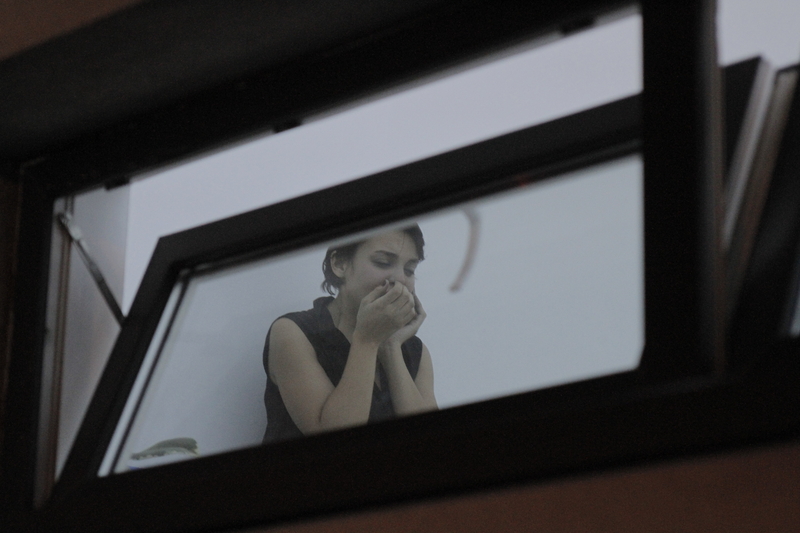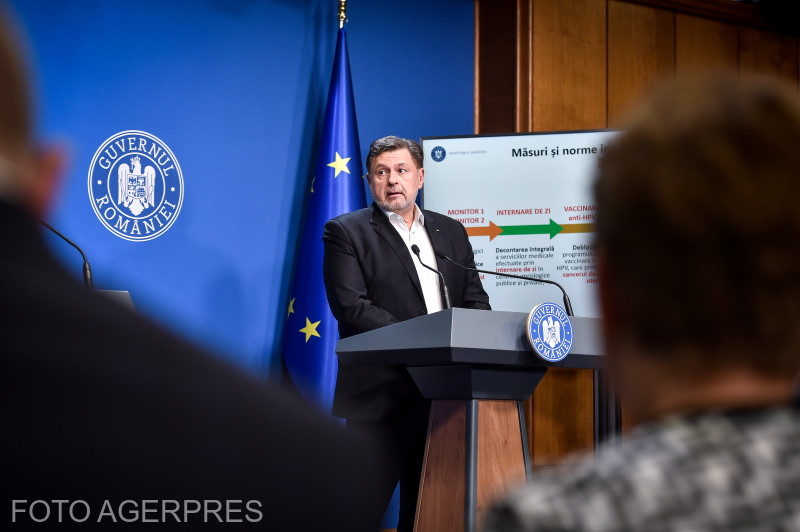
According to data exclusively obtained by HotNews.ro, in the first 9 months of 2023, the authorities transferred 19 patients with severe burns to hospitals outside the country. 12 of the 19 were injured and transferred after the highly publicized Crevedia bombing in August. The number of seriously burned patients transported abroad seems very low for a country that does not have a medical center specializing in the treatment of seriously burned patients, even 8 years after the Colectiv fire, but instead is one of the largest cases of major burns in Europe. Practically, in the absence of major burns centers, which have never been built, the Foreign Remittance Mechanism remains the only asset for major burns after the Collective, but the numbers show that even it is far from working.
Despite this, the number of patients with severe burns transferred in the first 9 months of 2023 (the period from January 1, 2023 to September 30, 2023), based on the order of the Ministry of Health 2063/2020, which introduced the Mechanism for approved transportation of patients with severe burns abroad , more than transported during the entire year of 2022 – only 12 patients.
Transfers of wounded in numbers (source of data: Ministry of Health, at the request of HotNews.ro):
- 19 patients were transferred from 01.01.2023 to 09.30.2023
- 12 patients were transferred from 01.01.2022 to 31.12.2022
- 22 patients transferred between January 1, 2021 and December 31, 2021 – the first year after the approval of the Transfer Mechanism
- Romania transferred 40 major burns abroad between 2016 and 2020, before the transfer mechanism was approved.
Due to the lack of centers for serious burns and the possibility of treating patients with very serious burns in appropriate conditions, Romania has for almost 3 years already had a Mechanism for the transfer abroad of patients with major burns, approved by the order of the Minister of Health – Ministry of Health Order 2063/2020.
In the absence of effective centers for their treatment, it is vital to transfer patients with severe burns within 24-48 hours to effective hospitals abroad.
The mechanism, in fact, foresees who and how step by step decides such a transfer, as well as the obligation of the Ministry of Health to conclude cooperation protocols with hospitals abroad that provide medical assistance to the injured.
The main conditions are that the patients meet the criteria for transfer – they have burns too complex to be properly treated in the country, but on the other hand, their condition is stable and can allow transfer (so as not to risk death during the journey) and hospitals from outside, with which there are protocols, have free places and agree to accept Romanian patients.

Fire in the Colectiv club, October 2015 / Photo: Gabriel Petrescu | Dreamstime.com
In the absence of effective centers for their treatment, it is vital to transfer patients with severe burns within 24-48 hours to effective hospitals abroad.
After years of hesitation, the Ministry of Health has approved the mechanism for transferring patients with serious burns (large burns) who cannot be treated in the country to hospitals abroad. The mechanism was developed by doctors and firefighters from the “Collective” club. Work on its development began back in 2018, during the tenure of Sorina Pintya as Minister of Health, and the draft regulation was almost completed at the time of her departure from the management of the institution. However, the transition mechanism will not be approved until 2 years later, in December 2020, during the ministerial mandate of Nelu Tetaru, under pressure from survivors of the Colectiv club fire and the media.
How many big fires did Romania burn? “We are an underdeveloped country in which brandy boilers are working at full capacity, stubble is burned, and gasoline is lit in the stove”
In Romania, between 600 and 800 cases of major burns are registered annually, the highest in Europe, but our country currently does not have any highly efficient center specializing in the treatment of major burns.
However, the vast majority of these patients are treated domestically and only a small percentage are transferred abroad – often under pressure from the media and collective fire victims, even after the transfer mechanism is approved.
Why are there so many burn accidents in Romania?
“We are an underdeveloped country, we are a country where cognac boilers work at full capacity, we are a country where stubble is burned, we are a country where people in the village heat a lot with firewood, light the stove with gasoline and other nonsense. A lot of accidents, in addition to traffic accidents, a lot of driving on gas. You can’t burn in Romania, only if you go to a club with harder, more rock music, because God strikes, as they said back then. Let’s not forget how many gas explosions, improvisations at stoves, a lot of unconsciousness, illiteracy, crazy courage in the country, I don’t understand. Mihai Grecha, who survived the fire 8 years ago in the Colectiv club, explains to HotNews.ro.

Mihai Grecha, who survived the fire in the Kolectiv club.
According to an official report of the Ministry of Health compiled in 2021 and used by HotNews, 10,000 patients come to the reception departments of Romanian hospitals annually for burn injuries, and about 4,000 cases require hospitalization for observation and specialized treatment. ro
About 1,400 to 1,500 patients present with moderate to severe cases requiring inpatient treatment lasting more than two weeks followed by specialized medical rehabilitation.
According to the Ministry of Health, the number of deaths from post-burn injuries is about 200 per year.
In 2015, at the time of the Colectiv fire, there was no medical center in Romania specializing in the treatment of patients with severe burns (“major burns”), nor a medical recovery center for patients with severe burns who require months further medical care. .
It is still missing today, 8 years after the tragedy in which 65 people died and 150 were injured. The conclusion is even contained in an official report prepared by the Ministry of Health in 2021, during the tenure of former minister Ioana Mykhailo and during the period when Mihai Grecha, who survived the fire, was an adviser in the Ministry of Health. After Colectiv, Mihai Grecha constantly fought so that other burn victims could survive in a country that does not have the conditions to save them: first from civil society, and from January to September of last year as an advisor at the Ministry of Health.
In Romania, at the moment, there are only functional units for the treatment of burn patients, which can only treat cases of a certain degree of complexity.
Does the mechanism of transferring large burns abroad work? No more than yes if we look at the numbers
With no facilities in hospitals to treat very serious burns, survivors of the Colectiv fire and the media have put pressure on the authorities to give these patients a chance to be transferred to a hospital outside the country as soon as possible.
This is how the transfer mechanism for patients with major burns was born. Doctors and those who survived the fire 8 years ago worked on the development of the mechanism. The transmission mechanism was developed, for the most part, during Sorina Pintya’s tenure as Minister of Health. In the fall of 2019, after the departure of Sorina Pintya from the leadership of the Ministry of Health, the project of the regulatory act for the approval of the Mechanism for the transmission of major burns was almost completed.
However, the mechanism remained in the drawers of the Ministry of Health for more than a year, until it was approved by ministerial order of Nel Tetaru in December 2019 under pressure from survivors of the Colectiv fire and the media.
But does the transmission mechanism work? More likely no than yes, the numbers show.
Between 2016 and 2020, before the approval of the transfer mechanism, Romania carried out a total of 40 international transfers of patients with severe burns.
In 2021, the first year after the approval of the Transfer Mechanism, Romanian authorities transported 22 burn patients for treatment abroad.
In 2022, after the arrival of Aleksandr Rafila at the head of the Ministry of Health, only 12 patients with large burns were transferred (source: data provided by the Ministry of Health at the request of HotNews.ro).

In general, official data suggest that the number of transferred patients with major burns has not increased even after the approval of the Transfer Mechanism, although it provides clear criteria and conditions for the transfer of patients with complex burns.
Moreover, the double bombing in Crevedia in August put the Ministry of Health at war with the survivors of the Collective, with the relatives of the victims and with activists for the rights of patients with severe burns. The reason: in July, the Ministry of Health transparently published a draft order “On the organization and activity of structures that provide medical assistance and care for burn patients.”
Some of the Colectiv survivors accused Oleksandr Rafil of basically wanting to turn the existing ATIs or burn units, which can only treat minor and moderate burns, into structures for large burns
Another boomerang effect in practice would be the cancellation of the Mechanism for the transfer abroad of badly burned people, adopted after the Collective – after a lot of public pressure and long fluctuations of the government, and on the basis of which the 12 wounded from Krevedia were also transferred: since you legislate “out of hand” that that there are conditions in hospitals in the country, you can no longer transfer large burns to the street – there is no longer a legal basis.
The order, which was then published in a transparent manner, was not adopted.
During the same period, in the days after the Crevedia explosion, the Ministry of Health publicly boasted of 34 “severe burn beds” in 6 hospitals in Romania.
When asked by a HotNews.ro journalist during a press briefing in the government, when 34 beds for major burns were accredited in Romania in 6 hospitals, which the institution he heads says currently exist in the country, Rafila replied that ” You want information from me that I cannot give you at this time because I am not responsible for it. I don’t have… I’m sorry, but if I ask you about how HotNews is funded, I don’t know if you can give me the details. I need to get the information, if we’re in good faith, so we can give it to them.”
Subsequently, HotNews.ro asked the Ministry of Health and on the basis of Law 544/2001 to publicly explain when and on the basis of which regulation the 34 beds were accredited in Romania. Although a written request was sent as early as September 29, a response from the institution headed by Alexandru Rafila had not yet arrived at the time of publication of this article.
Photo: Dreamstime.com.
Read also:
-
Return to 2015: how the Ministry of Health prepared to donate “from a pen” to a large burned before the explosions in Krevedia
- Asked about beds for serious burns, Rafila nervously replied: “I’m not responsible for that. I don’t have… I’m sorry, but if I ask you about how HotNews is funded, I don’t know if you can give me the details.”
-
The Department of Health boasts 34 “major burns beds” in 6 hospitals, a month after it sought to turn substandard wards into burns centers
Source: Hot News
Ashley Bailey is a talented author and journalist known for her writing on trending topics. Currently working at 247 news reel, she brings readers fresh perspectives on current issues. With her well-researched and thought-provoking articles, she captures the zeitgeist and stays ahead of the latest trends. Ashley’s writing is a must-read for anyone interested in staying up-to-date with the latest developments.